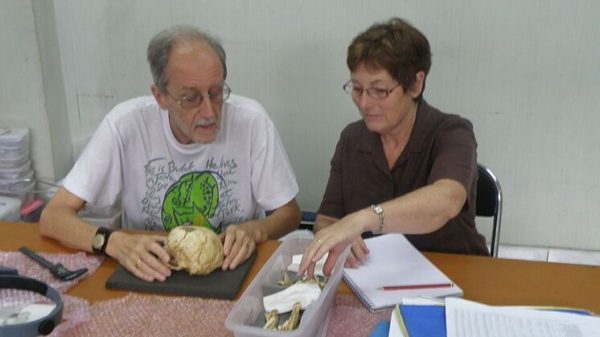Apartment rental prices in San Francisco – a city mocked for being so unaffordable that residents pay more than a grand each month to sleep in a bunk bed and share space with strangers – have plummeted during the coronavirus crisis, falling roughly 24% over the last year, according to new data.
It might seem like good news for a city long known for its dizzying rents. But the drop wasn’t enough to topple San Francisco from the top spot of the list of costliest cities compiled by the rental company Zumper. One-bedroom apartments on average still rent for a staggering $2,660 a month. Median single-family home prices in the city, meanwhile, have continued to rise, reaching an exorbitant $1.625m.
The numbers tell a troubling story about increasing inequality in the Bay Area, an issue compounded by Covid and the looming recession caused by the pandemic. Rents in the region are still too expensive for most residents, especially those who have lost income this year and were already clinging to the edge of a financial cliff. At the same time, tech workers and other high earners who easily adapted to work-from-home policies early in the pandemic while retaining big salaries have been able to lower their rental rates or cash in on new opportunities to purchase homes with extremely low interest rates.
Even amid an exodus from the city, San Francisco’s housing crisis may be getting worse. “Perspective is really important – and it is still ridiculously expensive,” said Matt Regan, the senior vice-president of public policy at the Bay Area Economic Institute. “The magnitude of the crisis before Covid and the mismatch between the number of people looking for housing and the number of people who could afford what was available was so enormous that – even with a phenomenal drop for a rental – we are still in a crisis”.
What happened when California tried to fix its homelessness crisis as the pandemic arrived
Read more
Last spring, the California Housing Partnership Corporation (CHPC), an agency created by the state legislature in 1988 to assist non-profits and local governments to create and preserve affordable housing, calculated California needed roughly 1.3m more affordable rentals to meet housing needs. Faced with a costly recovery from the pandemic, the state may fall even further behind.
Municipalities in the Bay Area alone need to build more than 441,100 units over the next decade to meet housing demands, according to an assessment released this year by the California department of housing and community development (HCD). The region is already far off pace. In the last cycle, the Bay Area issued permits for only 9% of the low-income housing the agency said was needed and roughly 71% of permits for market-rate housing.
“We have been digging the hole deeper every year for decades and it’s going to take more than one year of cost depreciation to get out of it,” Regan said. “We are going to emerge from Covid and still have a housing crisis.”
The drop in rental prices has done little to curb the blow for residents who suffered economically this year, many as a result of unemployment caused by Covid-19 restrictions. Half of Bay Area renters have lost income since last March and 11% haven’t been able to keep up their payments, according to data from the US Census Bureau.
“The pandemic has added new layers to our pre-existing housing crisis,” said Sarah Treuhaft, the vice-president of research at Policy Link, an institution that studies racial and economic equity. “It has been a very unequal pandemic.”
Low-wage workers have been the hardest hit, especially those in the retail, restaurant, and hospitality industries. People of color, who were disproportionately put on the frontline in low-paying jobs have borne the brunt. “Black workers have been hit so much harder than all others,” Treuhaft said, adding that census data shows roughly 85% of Black workers in California filed for unemployment last year compared with 39% of white workers. Nearly all Black workers in the state without a college education have been affected financially: 99% have filed for financial help.
“From history we know that recessions tend to exacerbate inequality,” Treuhaft said. The impact is already being felt – and it’s likely to have a lasting effect.
After the Great Recession, it took more than a decade for middle class workers to recover. This time, too, experts expect the virus to have long-lasting economic effects. “The people who lost their jobs are not going to be able to get back into the labor market any time soon,” said Karen Chapple, faculty director and professor of city and regional planning at the University of California, Berkeley. “You end up having millions of folks who have diminished earnings. That is going to affect their ability to afford housing, or even just to stay in the middle class.”
Chapple, who studies inequalities in the planning, development, and governance and oversees the Urban Displacement Project, a research initiative, expects that college grads will join low-income workers, people of color, and women – the people who have fallen in large numbers from the labor market this year – in seeing their long-term earning potential diminish. That means the pain could be felt for years to come, with lower wages affecting housing and displacement.
Rent moratoriums, Chapple said, were a Band-Aid solution unless they were paired with the debt relief renters would need when the legislation expires. Most would not be able to afford months’ worth of payments, especially after losing income. And it would not just affect the poor. “It is also now affecting the middle class and moderate income households,” she said.
The financial crunch brought on by the recovery and the recession will make it harder for states and local governments to invest in new housing. “You are going to have a lot of cities strapped in the next few years,” she said. “That is going to cause a lot of local disinvestment and a lot of displacement.”
The pandemic has already changed California’s approach to the housing crisis and hampered its efforts to increase the number of affordable units, according to a report from the state’s legislative analyst’s Office. The governor, Gavin Newsom, had to scrap a proposal to invest $750m into the California Access to Housing and Services (CAAHS) fund and lawmakers have shifted focus to short-term solutions needed to keep people off the streets. Newsom has signed more than a dozen new housing bills and California lawmakers have developed a legislative package aimed at keeping people housed and increasing housing supply, but it will still be a challenge to maintain momentum amid tight resources and waning construction incentives.
During a press conference on Friday, Newsom emphasized that housing production remained a top priority and outlined his new 2021 budget proposal. He has allocated an additional $500m in new low-income housing tax credits to encourage more production and announced the creation of a new accountability office within the state’s housing department to keep cities on track. It’s still unclear how exactly the new unit will enforce policies, but after years of missing targets, the state is ready to add teeth to its ambitious housing goals.
“People who were previously not in need of assistance are now going to need it,” Matt Schwartz, president and CEO of the California Housing Partnership, told KQED. “That’s something we’re all very concerned about. We had around 1.4 to 1.3 million households who were living without an affordable place in California. Now that number is going to grow.”
Anthemos Georgiades, Zumper’s CEO, thinks rental prices in the city will jump up again once the pandemic subsides. People will return and the city’s luxury market, its restaurants, yoga studios and smoothie shops will rebound with them.
“I think the test of time will be whether those renters who are clearly not renewing their leases in San Francisco now, whether they come back,” Georgiades said.
“Once the market does reset and people come back, we are right back to the same problem,” he added. “It is a bit like Groundhog Day – we are never going to build enough housing if San Francisco encounters its next boom.”





















































Свежие комментарии